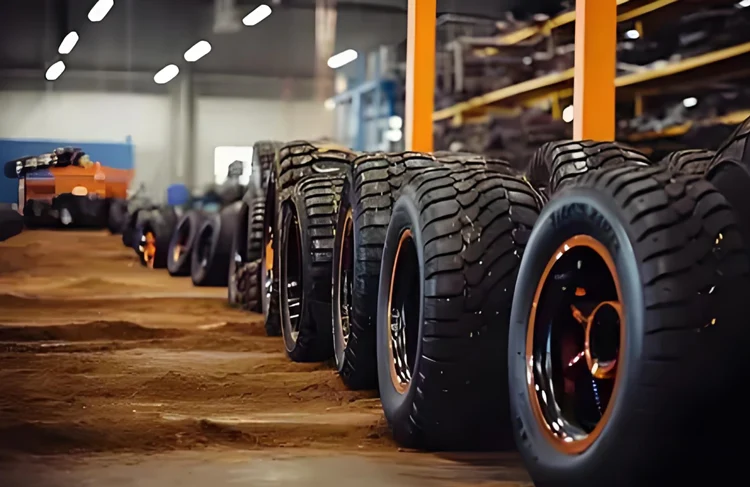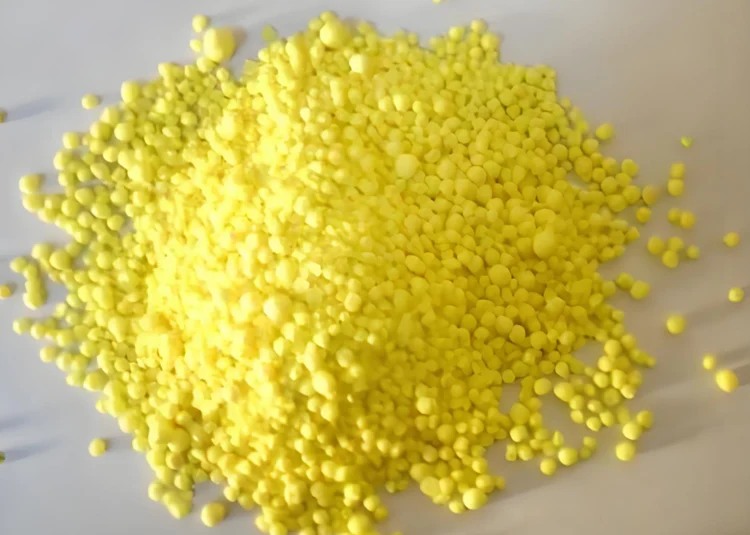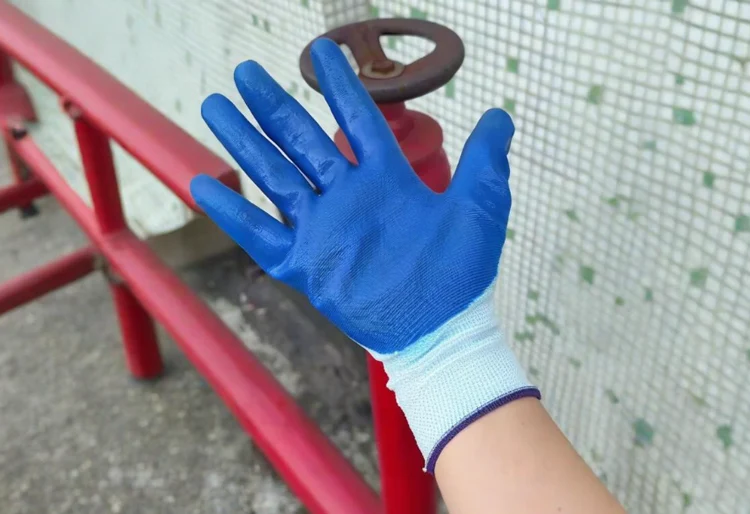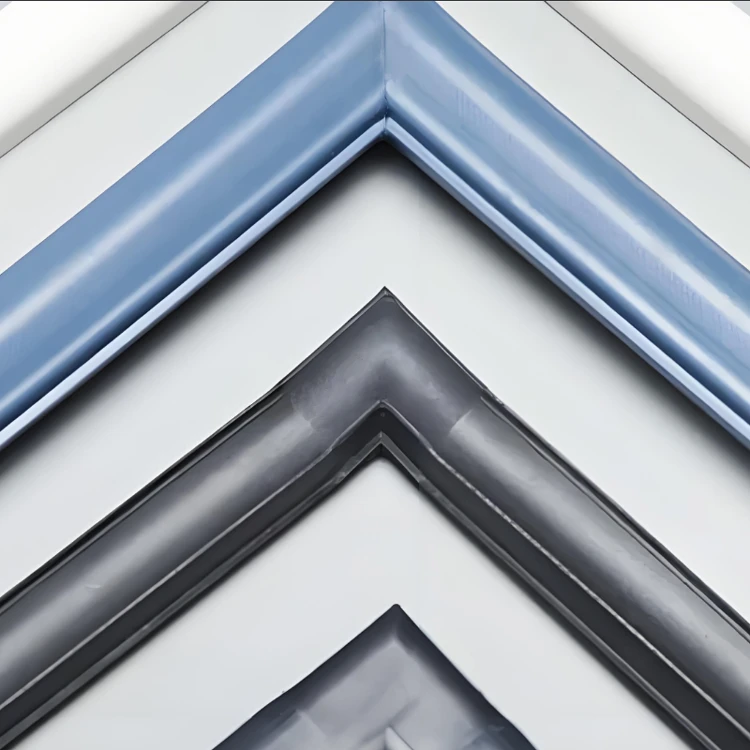I. Introduction: Why You Need to Understand the Vulcanization Process
Rubber is everywhere—from the soles of my shoes to the seals in a car engine. But few realize that the rubber we use in everyday products isn’t the raw, sticky, and easily deformable material that comes out of a tree or synthetic reactor. It’s been through a transformation process called vulcanization—a process that fundamentally changes its properties and makes it durable, elastic, and heat-resistant.
Before I understood vulcanization, I assumed rubber was naturally tough. But the truth is, raw rubber is weak and prone to deformation. It melts in the heat, cracks in the cold, and stretches uncontrollably. That’s where vulcanization comes in. By introducing cross-links between the rubber’s polymer chains—often with the help of sulfur—we unlock the material’s full potential.
Here’s what you’ll learn in this article:
- What vulcanization really means and how Charles Goodyear revolutionized rubber
- Why sulfur is the go-to chemical for this process
- A step-by-step breakdown of how vulcanization is carried out in modern manufacturing
- Real-world examples and uses of vulcanized rubber in automotive, medical, and industrial fields
- The core advantages that make vulcanized rubber indispensable
If you’re in engineering, product design, or procurement—this is the knowledge you need to ensure the rubber components you choose can perform under real-world conditions.

II. What is Vulcanization?
Vulcanization is the chemical process that transforms soft, sticky, and thermally unstable raw rubber into a material that’s tough, elastic, and resistant to heat and chemicals. In its simplest form, vulcanization creates bridges—called cross-links—between long polymer chains in the rubber. These bridges lock the chains together, preventing them from sliding past one another under stress or temperature changes.
This discovery didn’t come from a laboratory, but from a moment of serendipity. In 1839, Charles Goodyear accidentally dropped a rubber-sulfur mixture onto a hot stove. Instead of melting into a mess, the material became tough yet flexible. That “accident” laid the foundation for an entire industry and gave rise to one of the most important processes in materials science.
Think of vulcanization like giving rubber a suit of molecular armor.
Without it, rubber behaves like a warm chewing gum—stretchy but fragile. With vulcanization, it becomes resilient, like the soles of work boots or the inner linings of aircraft seals.
Key characteristics of vulcanized rubber include:
- Improved tensile strength and elasticity
- Greater resistance to wear, oxidation, and solvents
- Stable performance across wide temperature ranges
In essence, vulcanization is the single most important process that enables rubber to be useful in high-demand applications—whether in tires, hoses, gaskets, or industrial rollers.

III. Why Sulphur is Used in Vulcanization?
Sulphur isn’t just a chemical ingredient—it’s the backbone of the vulcanization process. When I mix sulfur with raw rubber and apply heat, a fascinating transformation happens at the molecular level: sulfur atoms form cross-links between adjacent polymer chains, turning the rubber from a sticky, deformable mess into a stable, elastic material.
1. Sulphur’s Role: Building Cross-links
Rubber polymers are long molecular chains that tend to slide over each other when not bonded. Sulphur acts as a bridge builder, forming covalent bonds between these chains. This network of cross-links restricts chain movement, giving the rubber enhanced resilience and structure.
2. How Cross-linking Changes Performance
Once cross-linked, rubber becomes:
- More elastic: It returns to its shape faster after being stretched or compressed.
- More heat resistant: It maintains integrity even at elevated temperatures.
- More durable: It resists abrasion, fatigue, and swelling in oils or solvents.
The amount of sulphur used also matters:
- Low sulphur content (1-3%): Produces soft, flexible rubber (e.g. gloves, seals).
- High sulphur content (over 30%): Yields hard rubber (like ebonite) used in battery casings.
3. Alternatives to Sulphur
While sulphur is the industry standard, other vulcanizing agents are also used depending on application needs:
| Vulcanizing Agent | Key Features | Typical Use Case |
|---|---|---|
| Peroxides | High heat resistance, no sulfur smell | Medical-grade silicone rubber |
| Metal oxides | Used with chloroprene rubbers (CR) | Harsh chemical environments |
| Resins | Lower compression set, electrical insulation | Electrical applications, sponge rubber |
Still, sulphur remains the go-to for general-purpose rubber due to its low cost, high efficiency, and versatility across product categories.
IV. Step-by-Step Vulcanization Process
Vulcanization may sound like a chemical mystery, but in practice, it follows a clear and structured industrial process. Over the years at Kinsoe, I’ve overseen dozens of rubber product lines—from molded gaskets to extruded profiles—and I’ve learned that success hinges on meticulous control at every stage. Here’s how it works:
1. Raw Material Preparation
The process begins with natural rubber or synthetic rubber (such as EPDM or NBR), combined with a blend of essential additives:
- Sulphur – for cross-linking
- Accelerators – to speed up vulcanization (e.g., MBT, CBS)
- Activators – like zinc oxide and stearic acid, to promote sulfur bonding
- Fillers and plasticizers – for reinforcing or adjusting flexibility
The proportions are critical: too much sulfur can make the rubber brittle; too little may result in under-vulcanization.
2. Compounding and Mixing
These ingredients are mixed in internal mixers (e.g., Banbury mixers) or two-roll mills. The goal here is to disperse the additives uniformly throughout the rubber matrix without prematurely initiating vulcanization. Temperatures are carefully controlled to avoid early cross-linking (called “scorching”).
This is where chemistry meets craftsmanship. The compounder must ensure homogeneity while keeping the compound reactive for the next stage.
3. Shaping and Forming
The rubber compound is now ready to be shaped using methods such as:
- Extrusion: For tubes, profiles, weatherstrips
- Compression molding: For thick gaskets, bumpers
- Injection molding: For precision parts, seals
- Calendering: For rubber sheets or fabric coatings
The unvulcanized rubber at this stage is pliable, tacky, and not yet mechanically stable.
4. Vulcanization (Curing)
Now comes the critical moment. The shaped rubber is subjected to controlled heat and pressure, triggering the sulfur cross-linking reaction. The method of heating depends on the product type:
| Vulcanization Method | Temperature Range | Common Applications |
|---|---|---|
| Compression Mold | 140–180°C | Oil seals, grommets, thick parts |
| Injection Mold | 160–200°C | High-precision seals, plugs |
| Hot Air Oven | 150–200°C | Sponge rubber, extruded parts |
| Microwave Curing | Fast, uniform heating | High-speed extrusion lines |
The curing time and temperature are carefully optimized to ensure full cross-linking without degrading the rubber.
5. Cooling and Post-processing
Once cured, the product is cooled to stabilize its shape and properties. Post-processing steps may include:
- Trimming excess flash from molds
- Surface treatments for adhesion or anti-sticking
- Quality inspection to verify curing level, hardness, and dimensions
Only now does rubber take on its final, useful form: resilient, elastic, and built to last.
V. Examples of Vulcanized Rubber
When I look around my workshop—or even my home—vulcanized rubber is everywhere. Its unique properties make it indispensable in products that must endure stress, heat, bending, and environmental exposure. Here are some of the most common and impactful examples where vulcanized rubber plays a starring role:
1. Tires
Possibly the most iconic use, car and truck tires are made from a blend of vulcanized natural and synthetic rubbers. The process ensures they withstand friction, heat buildup, and varying road conditions.
Without vulcanization, tires would melt in summer heat and shatter in winter cold.
2. Seals and Gaskets
From engine valve seals to O-rings in pipelines, vulcanized rubber gaskets offer airtight and watertight sealing under mechanical pressure. They’re resistant to deformation and can endure repeated compression cycles without failure.
3. Shoe Soles
Walk into any shoe store and you’ll likely see vulcanized rubber soles on sneakers, boots, and industrial footwear. These soles are abrasion-resistant, durable, and maintain grip even in wet conditions.
4. Conveyor Belts and Industrial Rollers
Factories rely on vulcanized rubber belts and rollers for high-friction, high-load movement. These components must resist chemicals, wear, and thermal shock—demands that only properly cured rubber can meet.
5. Electrical Cable Sheathing
Rubber insulation jackets made from vulcanized compounds are common in power cords and industrial cables. Their thermal stability and dielectric strength help protect wiring in high-temperature or hazardous environments.
Each of these examples reflects how vulcanization is not just a process—it’s a gateway to performance. The parts may look simple, but without vulcanized rubber, their function would fall apart.

VI. Uses of Vulcanized Rubber
The versatility of vulcanized rubber stems from its ability to maintain performance across extreme environments—heat, pressure, friction, and chemical exposure. In my work at Kinsoe, I’ve seen how this material adapts seamlessly across industries, offering reliable function in everything from automotive engines to medical tools.
Here are the major sectors where vulcanized rubber is indispensable:
1. Automotive Industry
Rubber parts in vehicles face constant stress from temperature swings, oil exposure, and vibration. Vulcanized rubber is used for:
- Tires – offering grip, durability, and thermal stability
- Engine mounts and bushings – absorbing vibration and reducing noise
- Oil seals and O-rings – maintaining tight seals under high pressure
Example: One of our clients replaced nitrile O-rings with properly vulcanized FKM rubber for turbocharger systems—resulting in longer service intervals and fewer leaks.
2. Industrial Applications
Factories and machines rely on rubber parts that can tolerate abuse:
- Gaskets and seals for chemical pipelines
- Anti-vibration pads for heavy equipment
- Roller coverings for manufacturing lines
Vulcanized rubber excels in maintaining its shape and sealing ability even under thermal cycling and compression.
3. Consumer Goods
Your everyday gear may already be benefitting from this chemistry:
- Shoe soles – abrasion resistance and flexibility
- Rubber gloves – especially when made with sulfur-cured latex
- Exercise bands and grips – for elasticity and comfort
4. Medical Field
Hygiene and performance go hand-in-hand in medical tools:
- Tourniquets and stoppers – must be elastic, inert, and cleanable
- Syringe plungers – smooth sealing with minimal friction
- Medical-grade tubing – often peroxide-cured for extra purity, yet still a form of vulcanization
In all these areas, the reason vulcanized rubber wins is its engineered balance of flexibility and strength, paired with chemical and temperature resistance that raw rubber simply cannot provide.
VII. Advantages of Vulcanization
When I explain vulcanization to new customers or trainees, I always say this: vulcanization is what makes rubber a true engineering material. Without it, rubber would be too soft, sticky, and unreliable for industrial or technical use. The advantages of vulcanization are what enable rubber to power cars, seal pipelines, and cushion machinery.
Here’s what makes vulcanized rubber so valuable:
1. Enhanced Elasticity and Flexibility
The cross-linked molecular structure lets rubber stretch under force and then return to its original shape without permanent deformation. This is critical in seals, gaskets, and shock-absorbing applications.
Vulcanized rubber doesn’t just stretch—it recovers.
2. Increased Heat and Chemical Resistance
Unlike raw rubber, vulcanized rubber can operate at higher temperatures and is more resistant to oil, ozone, acids, and other corrosive agents. This makes it suitable for automotive, industrial, and chemical environments.
3. Improved Dimensional Stability
Vulcanized rubber has a low compression set, meaning it maintains its thickness and sealing force even after long-term pressure. That translates into better sealing performance and longer service life.
4. Stronger Mechanical Properties
From tensile strength to abrasion resistance, vulcanized rubber performs significantly better:
- Less prone to tearing and surface wear
- Better fatigue resistance under repeated flexing
- Withstands mechanical stress without cracking or sagging
5. Longer Product Lifespan and Better Safety
Because of its structural stability and environmental resistance, vulcanized rubber products last longer, reduce maintenance costs, and contribute to safer operations. A failed rubber seal in a hydraulic system could cost thousands—or even trigger accidents. Vulcanization helps prevent that.
Whether you’re designing a sealing solution or sourcing materials for a production line, choosing vulcanized rubber ensures performance you can trust under real-world conditions.
VIII. Conclusion: How Vulcanization Changed Rubber Forever
The discovery of vulcanization marked a turning point—not just for rubber, but for modern industry as a whole. Before this process, rubber was unreliable: it melted in summer, cracked in winter, and lacked the mechanical strength needed for demanding applications. After vulcanization, everything changed. Tires became durable, seals became airtight, and rubber evolved from a novelty to an essential engineering material.
Let me briefly recap what we’ve covered:
- What vulcanization is: A cross-linking process that transforms raw rubber into a resilient, stable material
- Why sulphur is used: Its ability to form durable bridges between polymer chains
- How vulcanization is done: From compounding and shaping to controlled heating and curing
- Where it’s used: Across automotive, industrial, medical, and consumer sectors
- What benefits it brings: Enhanced elasticity, thermal stability, mechanical strength, and product lifespan
Looking Ahead: What’s Next for Vulcanized Rubber?
The field continues to evolve. Innovations such as:
- Microwave vulcanization are cutting cycle times in half
- Sulfur-free systems using peroxide or metal oxides are improving environmental profiles
- Smart elastomers with self-healing or conductive properties are opening new application frontiers
As product designers or material engineers, our next challenge is not just understanding vulcanization—but applying it strategically. Whether you’re selecting a material for a critical gasket or developing a new consumer product, knowing how to choose and specify the right vulcanized rubber compound is a vital skill.
So what’s your next step?
Start by reviewing the demands of your application—temperature, stress, environment—and match them with the right rubber compound and vulcanization method. And if you’re not sure? That’s where we at Kinsoe can help.
References:

